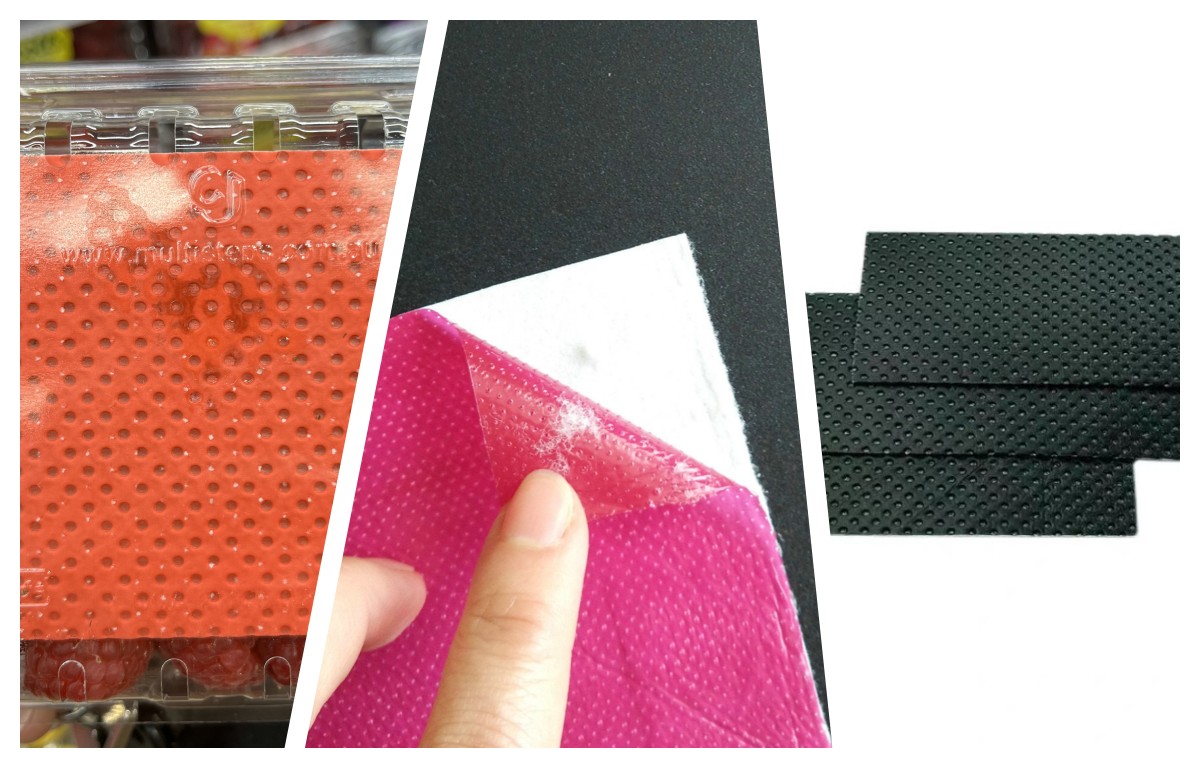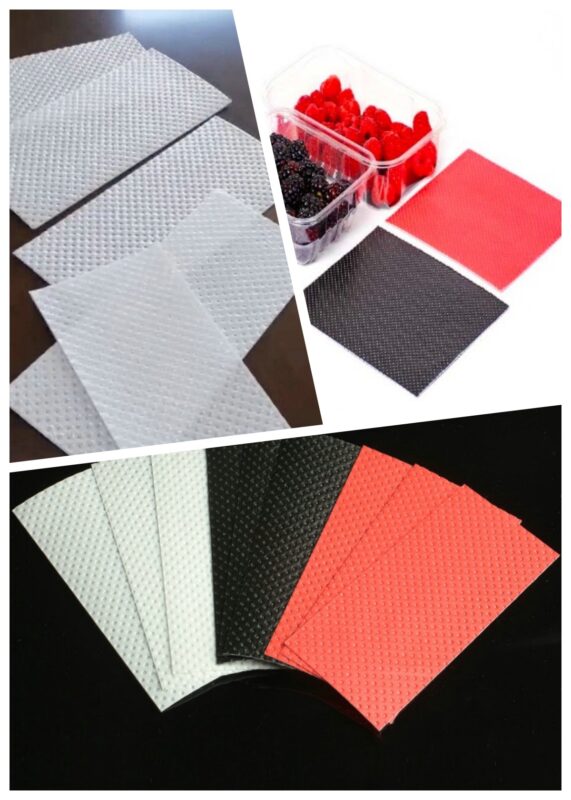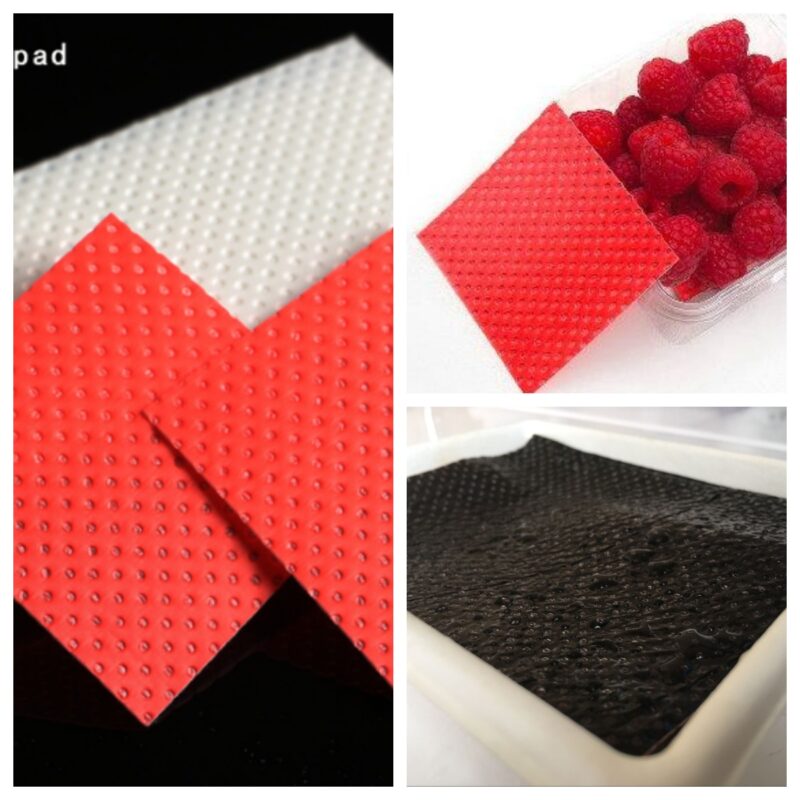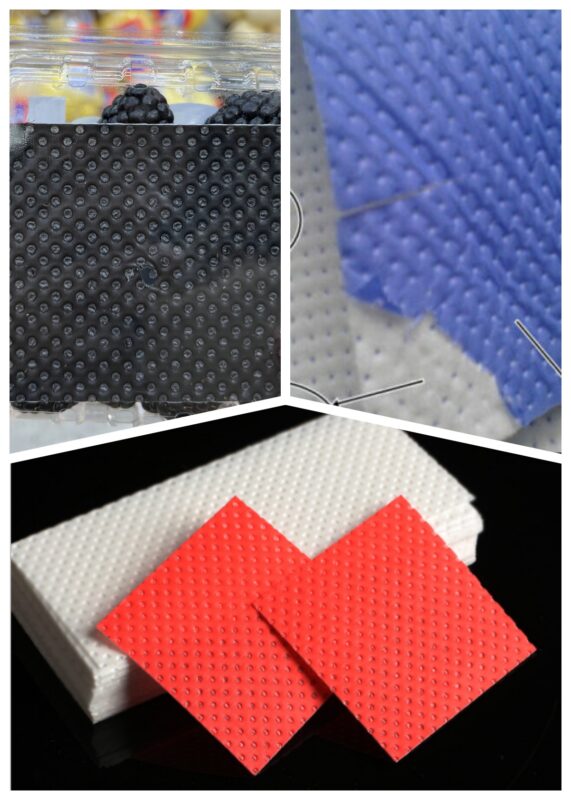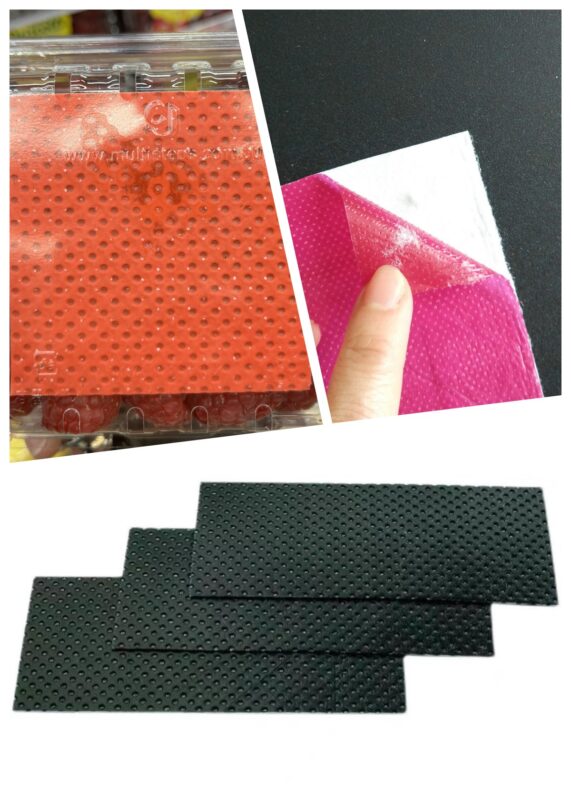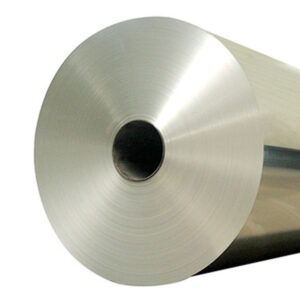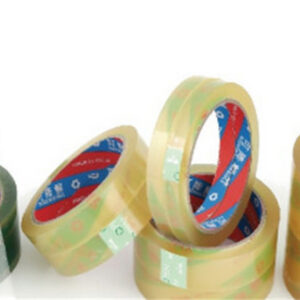Introduction of Soaker Pads
As society continues to develop and people’s living standards improve, there is an increasing focus on food safety and fresh preservation. To meet the demands for food quality, scientists are continuously exploring new preservation technologies. In this process, Absorbent Fruit Soaker Pads have emerged as a solution. This article will introduce the principles, application scenarios, and future prospects of absorbent soaker pads.
1. Materials of Absorbent Fruit Soaker Pads
Food freshness absorbent pads are primarily crafted from a combination of polyethylene (PE) and dust-free paper, both of which possess exceptional properties, thereby ensuring the stability and safety of the pads. Specifically, polyethylene (PE) is a food-grade plastic renowned for its outstanding water resistance and corrosion resistance, effectively shielding the pads from decay in moist environments. In contrast, dust-free paper serves as a pure and clean material, free from toxicity and harm, and it exerts no adverse effects on the food in contact. As a result, the meticulous selection of these high-quality materials serves to guarantee the pads’ superior quality and unwavering reliability in their performance.
2. Application Scenarios of Absorbent Soaker Pads
Food freshness absorbent pads play a vital role in various food preservation scenarios and are widely used in the following contexts:
a. Meat and seafood preservation:
Meat and seafood are among the most perishable food items. Food freshness absorbent pads have the capability to be used in meat and seafood packaging, where they absorb surface moisture, prevent decay and odors, and extend shelf life.
b. Vegetable and fruit preservation:
The freshness of vegetables and fruits directly affects their quality for consumption. Food freshness absorbent pads can be applied in the packaging of vegetables and fruits, maintaining their moisture balance, extending freshness, and reducing the risk of spoilage.
c. Ready-to-eat and take-out packaging:
With the growing popularity of take-out services, preserving ready-to-eat food is increasingly important. Food freshness absorbent pads used in take-out packaging help retain food moisture and texture, enhancing the dining experience for consumers.
d. Frozen food:
Frozen food tends to lose moisture when thawed, affecting its taste. Food freshness absorbent pads can assist in maintaining moisture, preventing water loss, and reducing the deterioration of food quality.
3. Advantages of Absorbent Soaker Pads
Compared to traditional preservation methods, food freshness absorbent pads offer numerous advantages:
a. Efficient moisture retention:
Food freshness absorbent pads quickly absorb surface moisture and trap it internally, maintaining a moist environment for the food and effectively slowing down dehydration and spoilage.
b. Extended shelf life safely:
The application of food freshness absorbent pads significantly prolongs the shelf life of food safely. They are reducing food wastage and cost savings. They are glue-free & chemicals-free.
c. Improved food quality:
By maintaining the moisture balance of food, food freshness absorbent pads slow down the decay process, preserving the freshness and taste of the food.
d. Environmentally friendly and sustainable:
Food freshness absorbent pads made from biodegradable materials are environmentally friendly and align with modern sustainability requirements.
4. Future Development of Absorbent Soaker Pads
As people’s demands for food safety and quality continue to rise, the application prospects of food freshness absorbent pads are vast. In the future, we can expect innovations and advancements in the following areas:
a. Multifunctional design:
Combining food freshness absorbent pads with other preservation technologies to develop multi-functional absorbent pads, such as antibacterial absorbent pads or oxygen-absorbing absorbent pads, to meet diverse food preservation needs.
b. Intelligent application of the pads:
Integrating the Internet of Things (IoT) and sensor technology to develop intelligent food freshness absorbent pads that can monitor the status and environmental conditions of food in real time. These pads can automatically adjust their water absorption and release rate to optimize freshness preservation.
c. Biodegradable materials:
While most food freshness absorbent pads currently use biodegradable materials, further improvements are needed to achieve faster and more thorough biodegradation. Researchers can explore new biodegradable polymer materials to ensure the environmental friendliness of food packaging.
d. Personalized packaging:
Different foods have varying preservation needs. Therefore, custom-designed food freshness absorbent pads based on food characteristics and storage conditions can be developed to achieve the best preservation effect.
e. Diversifying application fields:
In addition to the food sector, the soaker pads can find applications in other fields such as flower preservation and pharmaceutical storage. Expanding the application areas can drive further innovation and development of the technology.
f. Increasing consumer awareness:
Despite the significant advantages of food freshness absorbent pads in preservation, it is evident that consumer awareness of this new preservation material remains limited in some regions. To address this issue, there is a need to focus on strengthening promotion and education efforts. By doing so, we can effectively raise consumer awareness of food freshness absorbent pads, thereby facilitating their widespread adoption and utilization in various food preservation scenarios.
Conclusion
As a marvel of freshness preservation technology, absorbent soaker pads have made significant breakthroughs in food preservation. With their efficient moisture retention, environmentally friendly materials, and versatile applications, we have reasons to believe that Absorbent Fruit Soaker Pads will continue to evolve and play an even more significant role in the future. Consequently, people will enjoy fresher, safer, and more delicious fruits while actively contributing to environmental protection. Ongoing innovation ensures a promising future with better food quality and sustainability.



